Architecture for animals leads the way at this school for dogs
Details are designed with dogs in mind at Spain’s Educan School for Dogs, Humans and Other Species
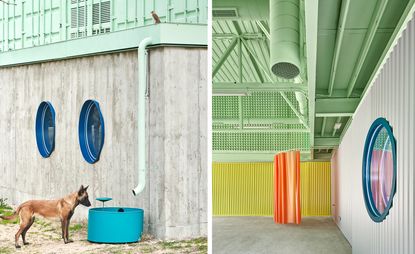
Humans and dogs harmoniously co-exist at the Educan School for Dogs, Humans and Other Species, an example of animal architecture in a rural setting west of Madrid, Spain. The space, which is used to train dogs and is designed to encourage wildlife, aims to help restore the natural order of the local ecosystem, which the architects feel has been lost amid recent advances in urban development and an agriculture heavily reliant on pesticides.
Spanish architects Enrique Espinosa and Lys Villalba are the brains behind the project. They consider the changing nature of agricultural buildings – and how they could become more innovative – in their approach to the school, which aims to be ecological, following principles of sustainable architecture, through its use of materials and design.
Animal architecture, for dogs, birds, bats and more
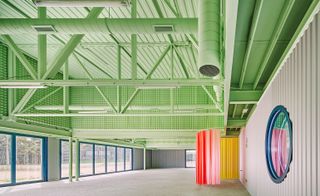
The building puts animals, not humans, at the centre of a design that considers all aspects from an animal’s point of view. Floors are designed to be trodden by paws, not shoes, with a dog’s sensitive pads accounted for. In the two main classrooms, dogs and humans play games or develop their sporting prowess on soft, removable rolls of synthetic turf. In the theory classrooms, river pebbles become a semi-polished, exposed-aggregate concrete finish for a smooth, tactile experience.
The approach to materials keeps waste reduction in mind, with shipping containers offering shelter to animals, and metal off-cuts used to mould the concrete. Industrial metal sheet panels are a standardised size to ensure no wasteful remains, while automated air conditioning and manual control elements – such as the blinds and shutters – ensure the day-to-day running of the school is as energy efficient as possible.
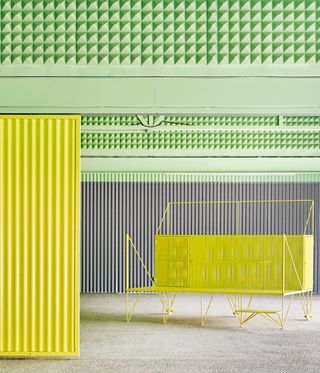
It is an awareness carried through to animal-friendly, thoughtful details. Eye heights drop to an average viewpoint of half a metre. Openings are raised to discourage dogs from leaving or being distracted, and window shutters are arranged to offer shade to dogs passing below. Sound-absorbing pyramid-shaped foam insulation reduces the noise of barks, doggy discourses and echoes inside, making for a more harmonious atmosphere.
This example of animal architecture caters not only to dogs; other creatures, such as birds and bats, make themselves at home in the environment, thus contributing to the restoration of the local ecosystem. Rainwater from the roof is collected in large troughs for birds and dogs, while birds including owls and kestrels make their homes in the ‘nest façade’ of the upper floor. Sparrows favour the circular holes of the shipping container edges, while bats prefer the nests inside the 3D letters spelling ‘Educan’ on the building’s façade.
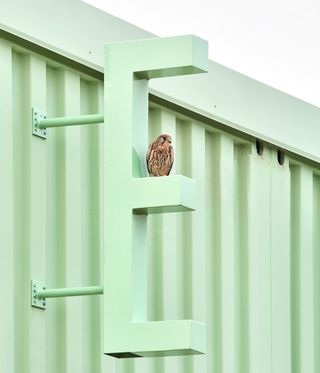

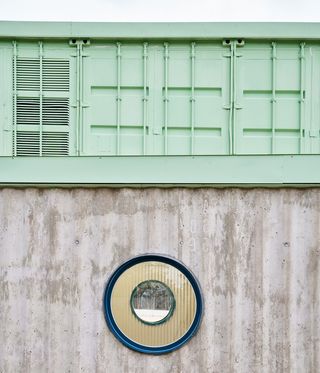
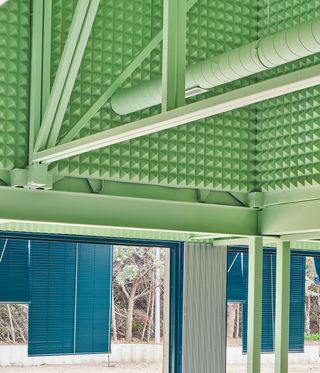
INFORMATION
Wallpaper* Newsletter
Receive our daily digest of inspiration, escapism and design stories from around the world direct to your inbox.
Hannah Silver is the Art, Culture, Watches & Jewellery Editor of Wallpaper*. Since joining in 2019, she has overseen offbeat design trends and in-depth profiles, and written extensively across the worlds of culture and luxury. She enjoys meeting artists and designers, viewing exhibitions and conducting interviews on her frequent travels.
-
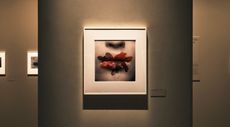 ‘Irving Penn: Centennial’ offers an unparalleled look at the seminal American photographer’s oeuvre
‘Irving Penn: Centennial’ offers an unparalleled look at the seminal American photographer’s oeuvreA new retrospective in A Coruña, Spain celebrates the meticulous grandeur of Irving Penn, spanning fashion editorial, still-life, nudes and portraiture across seven decades
By Jack Moss Published
-
 Inside Luna Luna: the amusement park designed by artists lands in New York
Inside Luna Luna: the amusement park designed by artists lands in New York‘Luna Luna: Forgotten Fantasy’ – featuring rides by Basquiat, Lichtenstein, Hockney, Haring, and Dalí – has opened at The Shed
By Osman Can Yerebakan Published
-
 Why champagne pairs beautifully with fine food
Why champagne pairs beautifully with fine foodMaison Krug unites champagne with decadent cuisine in the latest edition of its ‘Single Ingredient’ adventure, in collaboration with globally renowned Michelin-starred chefs who enhance the flavours and aromas of Krug Grande Cuvée or Krug Rosé
By Melina Keays Published
-
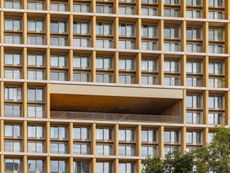 Explore wood architecture, Paris' new timber tower and how to make sustainable construction look ‘iconic’
Explore wood architecture, Paris' new timber tower and how to make sustainable construction look ‘iconic’A new timber tower brings wood architecture into sharp focus in Paris and highlights ways to craft buildings that are both sustainable and look great: we spoke to project architects LAN, and explore the genre through further examples
By Amy Serafin Published
-
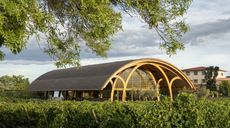 Bodegas Faustino Winery celebrates process through its versatile vaulted visitor centre
Bodegas Faustino Winery celebrates process through its versatile vaulted visitor centreBodegas Faustino Winery completes extension by Foster + Partners in Spain, marking a new chapter to the long-standing history between the architecture practice and their client
By Ellie Stathaki Published
-
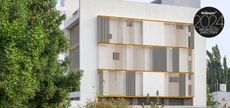 Playball Studio's architecture balances the organic and the technical
Playball Studio's architecture balances the organic and the technicalPlayball Studio, a young Indo-Spanish design practice, features in the Wallpaper* Architects’ Directory 2024
By Pallavi Mehra Published
-
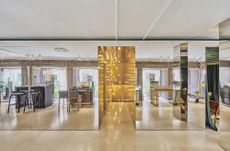 In Palma, beloved watch boutique Relojeria Alemana gets a dramatic revamp
In Palma, beloved watch boutique Relojeria Alemana gets a dramatic revampEdificio RA for Relojeria Alemana has been redesigned by OHLAB, refreshing a historical landmark in Palma, Mallorca with a 21st-century twist
By Ellie Stathaki Published
-
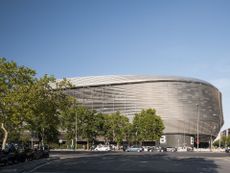 Santiago Bernabéu stadium redesign: a sneak peek into the works
Santiago Bernabéu stadium redesign: a sneak peek into the worksWe take a tour of the Santiago Bernabéu stadium in Madrid, as the beloved sports facility is being given a refresh
By Agnish Ray Published
-
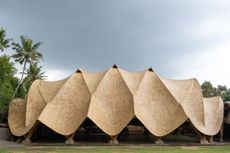 Building with bamboo: In Bali, designer, Elora Hardy, shares her tips and experience
Building with bamboo: In Bali, designer, Elora Hardy, shares her tips and experienceBamboo architecture can be powerful and sustainable; here, we talk to Ibuku's Elora Hardy, who shares her tips, thoughts and experience in working with the material in Bali
By Ellie Stathaki Published
-
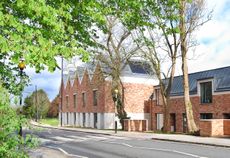 Hermitage Mews is a net-zero family of homes in London’s Crystal Palace
Hermitage Mews is a net-zero family of homes in London’s Crystal PalaceHermitage Mews by Gbolade Design Studio is a sustainable residential complex in south London's Crystal Palace, conceived to be green and contextual
By Ellie Stathaki Published
-
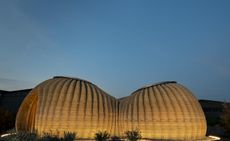 Sustainable architecture: 43 innovative and inspiring building designs
Sustainable architecture: 43 innovative and inspiring building designsThis is sustainable architecture at its best: from amazing abodes to centres of care and hard-working offices, these buildings not only look good but also do good
By Ellie Stathaki Published